The perfect combination of sweet and spicy, ginger is a unique flavour that I just can’t get enough of. Whether you want to recreate the spiciness of ginger ale from your childhood or want freshly grated ginger for delicious curry, you can easily grow ginger in the garden or in the home. This guide covers everything you need to know about how to grow ginger so you can have an endless supply of the favoured spice.

One of the best things about sharing my love of gardening online is that I get to meet so many fellow gardeners! Over on Instagram, I met with the lovely Tasha Greer from Simplestead and we chatted over Instagram live about her book, Grow Your Own Spices. After the talk, I was completely obsessed with the idea of growing ginger!
I’m not a huge spice grower, instead opting to grow mostly herbs and other healing plants. But I invited Tasha to talk about ginger with me and she gives some great advice if you’re thinking of adding some spice to your garden.
This guide covers points and tips on how to grow ginger root directly from Tasha’s book. In it, she covers more than 30 different spices anyone can grow. Be sure to check out Grow Your Own Spices if you’re interested in growing tons of spices.
Reprinted with permission from Grow Your Own Spices: Harvest homegrown ginger, turmeric, saffron, wasabi, vanilla, cardamom, and other incredible spices — no matter where you live! by Tasha Greer © 2021. Published by Cool Springs Press. Photography courtesy of Tasha Greer where noted.
What is Ginger?
We all love it, but what is this funky, wrinkly thing we like to grate? Ginger, Zingiber officinale, is a plant grown mostly for its rhizome, although technically the whole plant is edible.
Mostly used for culinary purposes, it has a spicy yet sweet taste. You can find it in curries, in baking like gingerbread, as a spicy zest to salad dressings, and in some very popular beverages.
Where did Ginger Come From?
Interestingly enough, we have no idea where ginger originally comes from. According to Tasha, “It’s considered a cultigen, or a plant that exists as a result of human cultivation. We don’t know its origin or when humans started using it. We only know that it would not exist without us.”
Medicinal Properties of Ginger
Gingerols are the active components in the plant that give it a distinct spicy/sweet flavour. The components are also responsible for the anti-inflammatory properties and are even used to treat arthritis.
Medicinally, people know ginger best for easing an upset stomach. The virucidal properties aid in destroying viruses, making it a useful tool for your medicine cabinet,
“The most effective way to receive this medicine is through the use of its fresh juice,” says Tasha.
The easiest way to do this is to process the root with a juicer. Then, place the liquid in ice cube trays, and store it in the freezer to have an easily accessible antiviral remedy on hand. Add water, honey, and a squeeze of lemon to cut the spiciness as needed.
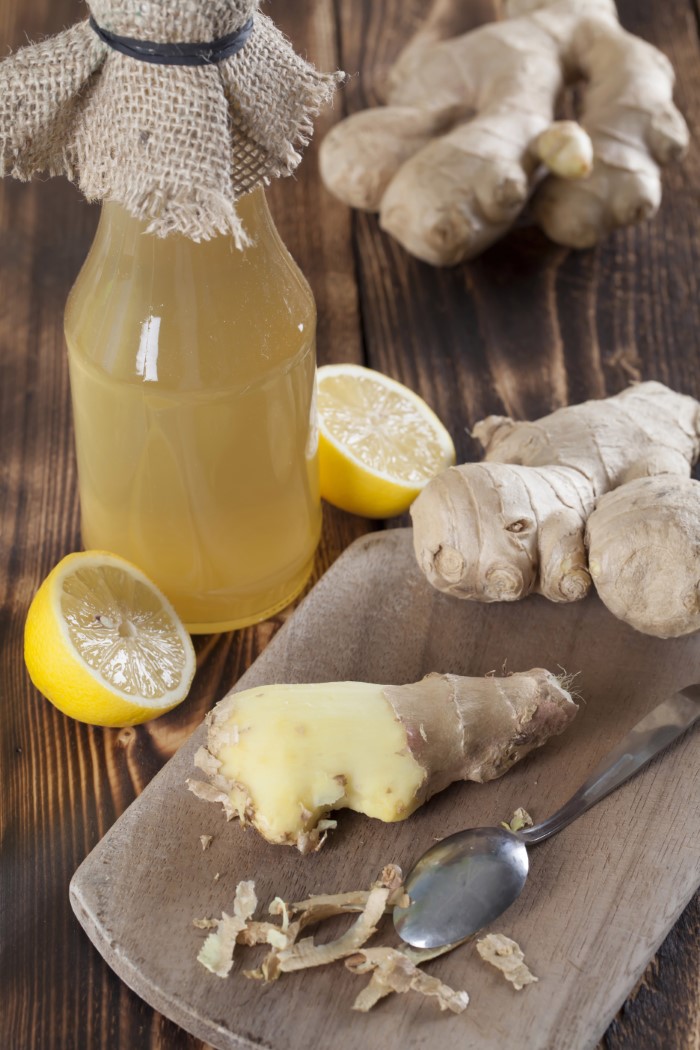
How to Grow Ginger
Choosing a Rhizome
The easiest way to grow ginger is by taking a piece of rhizome from existing ginger to grow another. Sounds easy right? To get the best possible ginger harvest out there, the key is to select the right rhizome to get you started.
You probably would recognize ginger just by its touch. They are firm, knotty-looking rhizomes that have rough skin. Most of the ginger you find in the grocery store are Chinese cultivars. The flavour tends to be milder and it will have a thicker skin to help with shelf life.
Technically, you can plant any ginger as long as it isn’t old or diseased. It’s worth noting that ginger purchased from the grocery store may have a growth inhibitor sprayed on it to stop it from sprouting early. Ideally, you want to source your ginger from an organic grower or your local farmer’s market.
Avoid any pieces that look shriveled and dry. You want a plump piece of ginger with lots of eyes (growth buds). It should be 4-6 inches long with multiple arms.
Here’s Tasha’s advice for choosing a rhizome:
“Mature rhizomes that have been through natural senescence will produce the best yields. Senescence typically happens in fall after plants have had a long growing season.” Senescence is the life stage in which a plant’s metabolism slows before it dies.
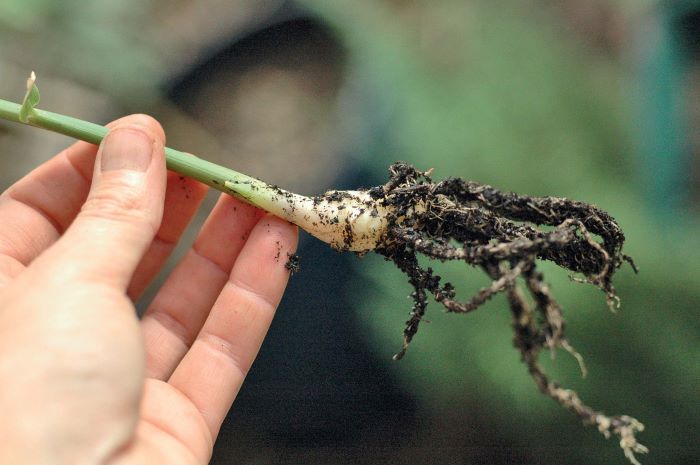
Planting
Most gardeners choose to start their ginger indoors and then transplant it outside as it warms up. Once you have your rhizome, pay attention to where the eyes are. If you have post-senescence ginger ready to go without eyes, store it in a warm location until the eyes appear.
Cut the ginger into pieces approximately 1 to 1 ½ inch wide. Each of the pieces will need an eye. Once cut, let it sit for 1-2 days until a slight crust has formed.
When planting, fill a pot with good quality potting soil until it is 2 inches from the top. Add in some slow-release fertilizer and place your rhizome in it approximately 1 inch deep, healthy eyes facing upwards.
Top off with some compost. Space any rhizomes 12 inches apart. It will grow up to 4 feet tall, so be sure to accommodate this type of growth.
Water the plant well and keep moist until shoots have emerged. This takes anywhere from 1 week to 1 month. Ginger prefers filtered light, not direct light. Under a tree where it will receive dappled light is a great spot to have it.
The plant can only survive when there is no frost. It can be planted in early spring after the danger of frost has passed or any time of year if you live in a warmer zone. A tropical plant, ginger likes heat and humidity. It will grow best in temperatures above 65°F or 18°C.
Tasha’s advice? Here’s what she has to say!
“When growing in the ground, periodically hill the soil from the outer edges of your rows around the root area to encourage the rhizomes to plump. Stop fertilizing if plants flower.”
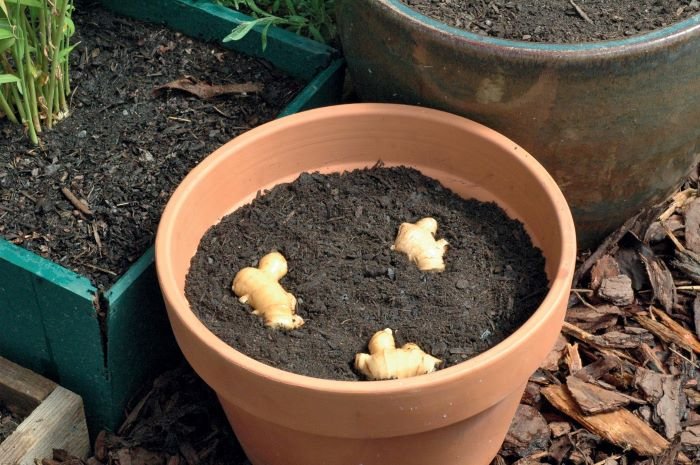
How to Grow Ginger Indoors
You can easily grow ginger indoors too! All you need is your leftover scrap or cut piece of ginger to get it started. Soak the rhizome overnight just in case it has a growth inhibitor, especially if you sourced it from a market.
In a pot, follow the same planting instructions as above. Keep in mind the pot needs to be large enough to accommodate the size of the rhizomes as they grow. The pot should also drain well, as ginger is prone to root rot if it sits in soggy soil.
When planting, only place one piece of ginger in each pot. Let it sit in indirect light in a warm part of the house. Watch and wait!
How to Harvest Ginger
Remember senescence? This is when the plant begins to slow down before it dies. The leaves will start to turn yellow and brown. This usually occurs when the plant gets less sunlight and it cools down, signaling the ginger to grow more rhizomes to begin to store energy for the colder season. This is also when the rhizomes grow their protective skin. And you guessed it…it’s when we’re ready to harvest!
Ginger takes some time to grow. Baby ginger can be harvested after 6-8 months. You want to harvest the ginger before it reaches senescence. Mature ginger, on the other hand, takes more than 10 months and you want to harvest after senescence has occurred. Be sure to save the best rhizome (fat and healthy-looking) to use for future planting.
Tasha says you can also trick the ginger into an early harvest. “To initiate premature senescence, cut the top few inches of leaves to reduce photosynthesis. Then harvest in 2–3 weeks.”
When harvesting, you can dig out and use the whole rhizome. Alternatively, you can cut away a piece of the rhizome if the plant is still growing. In this case, cut a piece that is at least 2 inches from the stock. The rest of the plant will continue to grow.
Now that you know how to grow ginger at home and harvest it, it’s time to enjoy it. Be sure to check out my recipe for homemade ginger ale. It tastes so much better than the canned stuff!
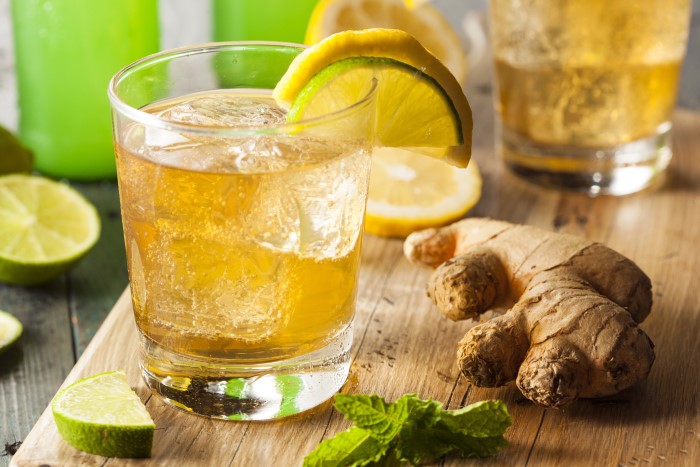

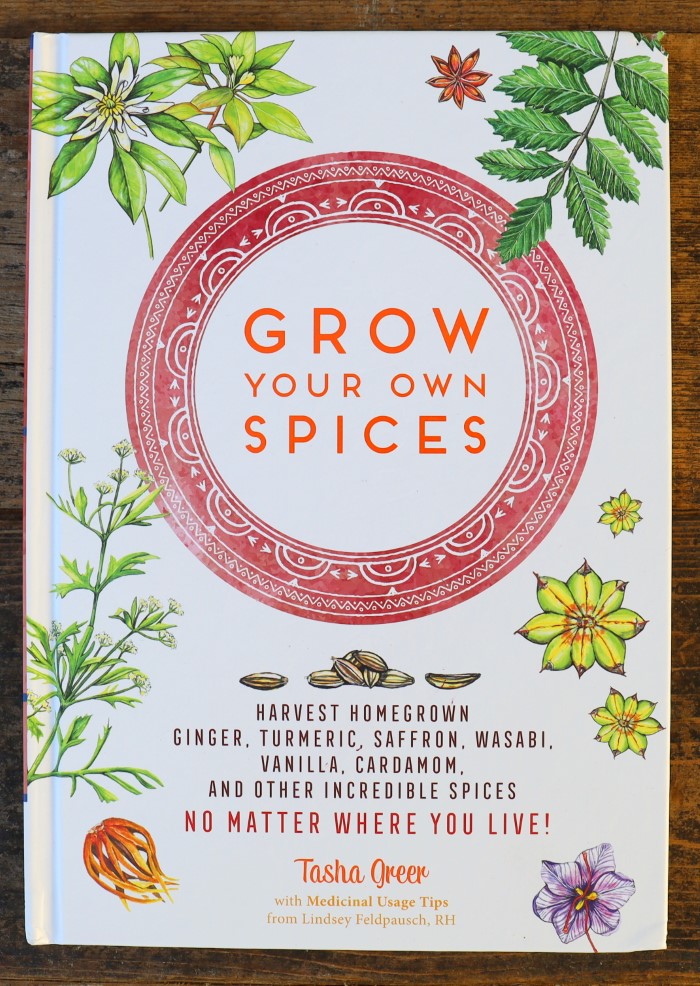



I’m very excited to get this information as I am starting to grow my own food. Learning that I can grow my own ginger and turmeric is AWESOME as I have arthritis and want something to help with inflammation. I want to grow my own edible flowers as well. Thank you for this website!
Thank you